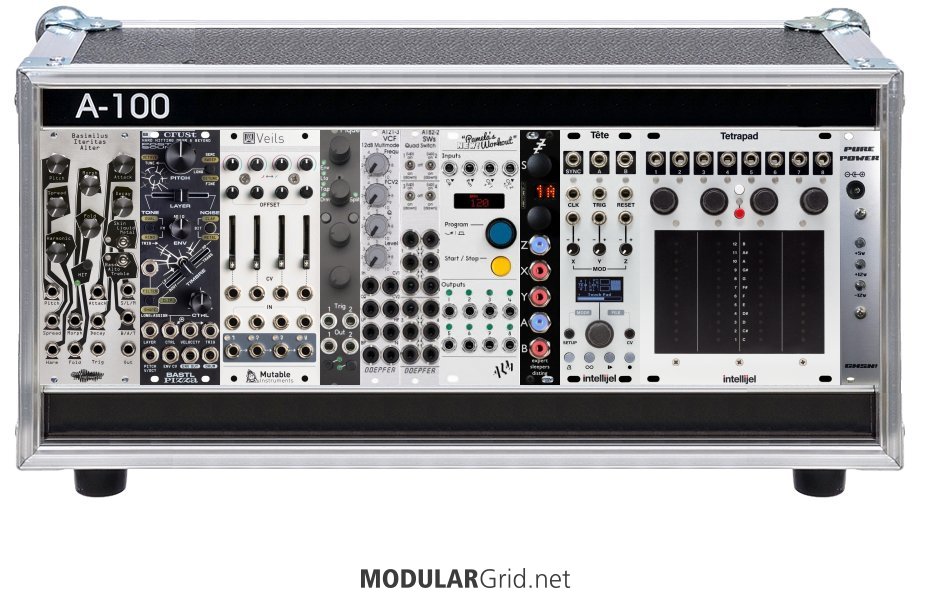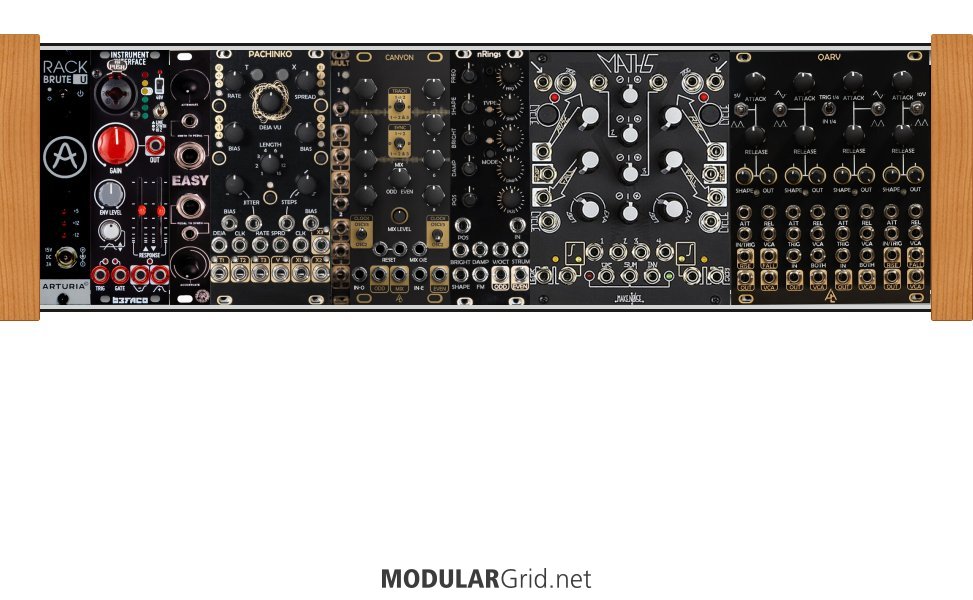One thing worth considering here is a) a matrix mixer and b) some kind of switch setup like the Doepfer A-182-2. They'll help you facilitate changes in your setup without having to do a lot of repatching (I like repatching, but it ian't always convenient).
A Pip Slope or other small and simple envelope generator is not a bad idea - Maths is good for envelopes, but if you have the space it's nice to delegate such mundane duties to other modules. You can also take the envelopes from the Mother-32 and use them for other stuff as well.
As for VCAs, you're fortunate here in that the Moog synths, the QPAS, and the Plaits all have their own built-in VCAs, meaning that the practical aspect of them isn't a huge deal here. The STO doesn't, but that's fine - you can always find one for it out of what's already here, or you can even use it as an audio rate modulation source to get different FM sounds with your other oscillators.
The Optomix is not just a VCA but a low pass gate, so it combines VCA and subtle low pass filtering to give audio a specific character based on how natural acoustic sounds work (as they get louder, they get brighter). If you wanted to explore this in a cheaper form, some of the best cheap small modules available are the Takaab 2LPG passive low pass gates, one of the only 2hp modules that works fine aside from mults. Not only are they great for audio and CV, but they have a switch so you can control how much filtering they do and use them as a plain VCA if needed. However, the Optomix is a nice module with nice knobs, so if you want to throw money at this particular concept it's a good choice.
With what you have here, I'd mainly be thinking about VCAs for modulation (you can't go wrong with a Doepfer 130-8) as well as some kind of attenuverter/offset module like the Tiptop Miso, Frap Tools 321, or Happy Nerding 3x MIA. If you're not sure what you want from all these different VCA/attenuverter options, a good choice might be an After Later Audio Cloaks or an Intellijel Quad VCA, because they have lots of options to use them as variations of all these things so you can figure out what makes the most sense (switching between unipolar and bipolar, switching between linear and exponential, etc). While the Tangle Quartet is good (people say it is very high quality), it may also be worth looking into one that switches between linear and exponential, because it's hard to get a feel for why that matters based on description alone. It's up to you.
Basically, all of this seems fine to me in terms of basic building blocks, but now you need to think about quality of life modules to make this stuff as easy to use as possible.
How do you imagine all these extra parts being sequenced/played? A Keystep 37 probably won't be enough even if the Moogs sequence themselves. If your goal is to experiment with generative and uncontrolled stuff, you may want to look into quantizers. That way you can take any modulation of any kind and turn it into a melodic phrase by having the quantizer turn it into 1 volt per octave signals. Throw in some gates/triggers from a different source (Pam's, Maths, etc) and suddenly anything in your setup is a source of unique melodies and arpeggiations. Pam's does quantization if I recall, but there are other options if you want to free it up. Splitting your note/pitch events and timing/trigger/gate events in this way is probably always going to be the best way to use your modular's generative composition possibilities to their fullest extent without feeling too much like you're not doing anything.



